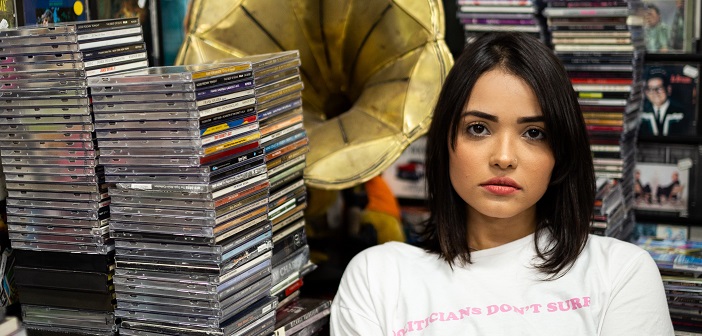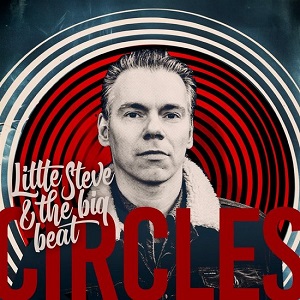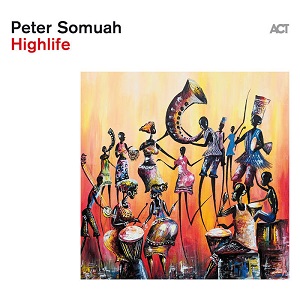Album review overview: Frant1c, Eva Cassidy and more
Dozens of new albums arrive at Maxazine’s editorial staff every week. There are way too many to listen to them all, let alone review them. It ensures that too many albums are left behind. And that’s a shame. That is why today we post an overview of albums that arrive at the editors in short reviews.
Caleb Wheeler Curtis – The True Story of Bears and the Invention of the Battery
Saxophonist Caleb Wheeler Curtis presents an ambitious double album, “The True Story of Bears and the Invention of the Battery.” The album comprises two very distinct parts, each with its own character and lineup. On the first album, “Bears and the Invention of the Battery,” Curtis leads his regular trio with bassist Sean Conly and drummer Michael Sarin through a collection of mainly original compositions. He showcases his versatility here by switching between various instruments: Stritch (a straight alto sax), trumpet, sopranino, and tenor saxophones. The personal nature of the music is amplified by voice recordings of Curtis’s late grandfather.
The second part, “Raise Four: Monk the Minimalist,” is a bold interpretation of Thelonious Monk’s repertoire, performed with bassist Eric Revis and drummer Justin Faulkner of the Branford Marsalis Quartet. Curtis approaches Monk’s compositions from a minimalist perspective, emphasizing the power of simplicity. What makes this album unique is Curtis’s willingness to embrace imperfection, especially in his trumpet playing. This vulnerability, combined with his technical command of various wind instruments, results in an authentic and captivating listening experience. Admittedly, the music may be too experimental for some but is no less impressive but less accessible. (Elodie Renard) (7/10) (Imani Records)
Eva Cassidy – Walkin’ After Midnight
Eva Cassidy’s “Walkin’ After Midnight” takes us back to a memorable evening at the King of France Tavern in Annapolis. These recordings from November 1995, just two months before her legendary Blues Alley concert, came about by chance when two of her regular band members were unavailable. With violinist Bruno Nasta as an impromptu addition, the stripped-down ensemble – violin, lead guitar, bass, and Cassidy’s acoustic guitar – created a surprisingly intimate setting. This minimalist lineup offers a fresh take on familiar songs from her repertoire, from the swinging title track to a tender rendition of “Summertime.” Although 11 of the 13 songs have been released in other versions, these arrangements are previously unheard. Cassidy’s voice sounds freer and more exuberant than ever, dancing in the space created by the pared-down instrumentation.
The album closes with her version of The Eagles’ “Desperado,” recorded at Pearl’s in 1994, where Lenny Williams’ new keyboard arrangements bridge past and present, and have never before been released. This collection is a historic document, more so than just another enjoyable album from Cassidy. (William Brown) (8/10) (Blix Street)
Little Steve & The Big Beat – Circles
Real old-school R&B pours out of the speakers when you play the new album by Little Steve & The Big Beat. The band has been rocking stages in Belgium and the Netherlands for about a decade, and after releasing an EP in 2013, a single in 2014, and a full album in 2016, we’ve had to wait a bit, but now the album “Circles” has finally been released. The band consists of Steven van der Nat (vocals, guitar), Martijn van Toor (tenor sax), Evert Hoedt (baritone sax), Bird Stevens (bass, percussion), and Jody van Ooijen (drums). Of the eleven original songs, ten are written by Steven van der Nat, and one by Martijn “Tinez” van Toor. Guests include Kat Riggins (vocals) on one track, Bas Janssen (keys) on three, and Pascal Haverkate (trumpet) on another. From the very first listen, it’s hard to sit still, which is a good sign. The music is filled with great rhythms, appealing licks, and surprising twists. But it’s not all high energy; there’s plenty of variation and enough slower moments to keep things interesting.
From the opening track, “99 lbs,” the vibe is spot on. It’s a great swinger, where the combination of guitar and saxophones over solid drum and bass work immediately makes the listener move. Other notable tracks are the brooding “Anna Lee,” the calmer “Circles,” and the instrumental “Tired Of Moaning,” written by van Toor. Once again, a solid album from these rocking swingers. (Eric Campfens) (7/10) (Timezone Records/Sonic Rendezvous)
Frant1c – A Brand New World
Anne-Claire Rallo founded the project Frant1c after losing her partner, Eric Bouillette (from Nine Skies and The Room, among others). The core lineup primarily consists of members from these bands. This debut album tells the story of Charlie and Hope, who are inseparable. Charlie wakes up alone in a different, devastated world and, during his search for Hope, experiences feelings and questions that are both universal and personal. It takes a few songs to fully immerse in the story. You can feel the passion in the various vocalists and the music, which conveys a range of emotions. Some transitions are slightly “messy,” but there are also beautiful twists and turns. The keyboards especially convey a surrealistic world, the guitar playing is impressive, and the drums always serve the music.
You can hear influences from bands like The Room. The varied music includes rock (sometimes with a touch of metal) and classical/minimalist elements. John Mitchell (Lonely Robot, Arena, etc.) oversaw the mixing and mastering. Anne-Claire should be proud of “A Brand New World.” (8/10) (Esther Kessel – Tamerus) (Independent release)
Peter Somuah – Highlife
Rotterdam has been home to trumpeter Peter Somuah for a while, but he originally hails from Ghana. There, he also found his first musical love, highlife: a unique music style that may even be recognized by UNESCO as a cultural heritage. Originally played in British clubs during the colonial period in the 1950s for the wealthier classes – hence the name “highlife” – the music later merged with traditional music and became popular among local African audiences. This album is primarily a tribute to African roots. At the same time, the pieces form a rich connection between highlife and modern jazz, with recognizable influences from artists like Hubbard and Davis. The way Somuah “cuts” his tone reveals his mentors. It’s a pleasure to listen to, in all its variety – sometimes calm and almost languid, then with a lively rhythm.
Blending a traditional sound with modern elements is not without risk; it can come across as artificial. However, on “Highlife,” this is not the case: Somuah succeeds in making the compositions sound authentic, thanks to the deep joy of playing. Naturally, the trumpet takes centre stage, but the compositions and arrangements are given priority, with space for all parts. Choosing to record the pieces with analogue equipment in a small studio completes the experience. This must be how highlife once sounded in its golden days, revived and enriched by Peter Somuah. (Jeroen Mulder) (8/10) (ACT)










